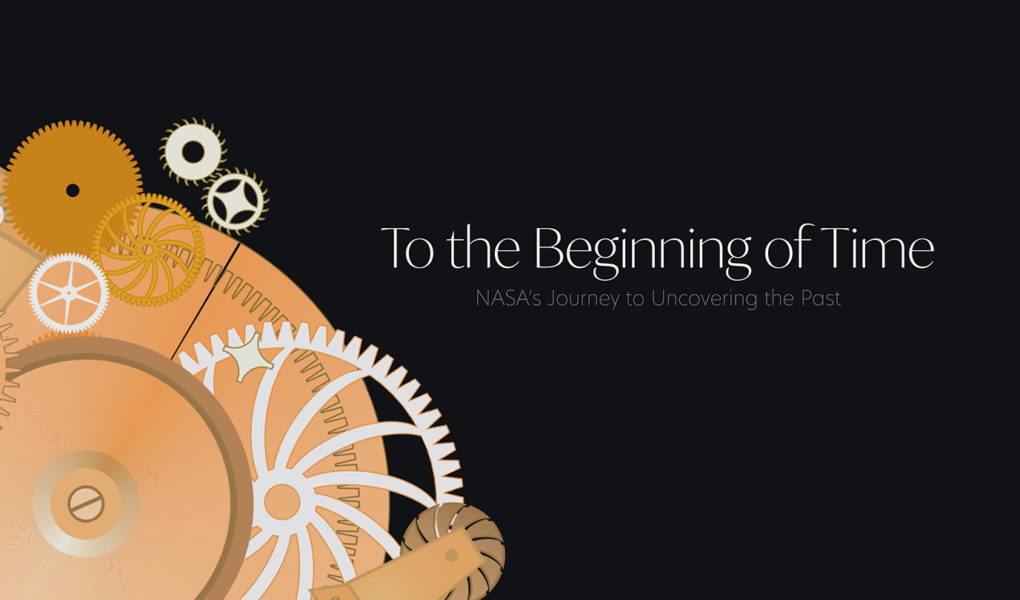Abstract
The evolution of orbital observatories has and will shape the way we learn about the universe. Ever-increasing improvements in space flight and the advancement of instruments and technology have led NASA to many groundbreaking developments and discoveries. Discussing three of NASA’s many orbital observatories, the evolution of these space vehicles over the decades has each lent their hands to the realization of the James Webb Space Telescope. The first of the three observatories discussed is the Orbiting Astronomical Observatory, followed by the Hubble Space Telescope, concluded with the soon-to-be launched James Webb Telescope. With the development of these observatories, our ability to visually see further into the past is expanding. The James Webb Space Telescope is going to forever change our standard of deep space imaging via its revolutionary primary mirror and deployable structure. Assuming the continuation of these developments, the foundations of looking further into the past will be deeply rooted in the future.
Introduction
Time travel is a concept that has captivated humans for centuries. From avoiding the social faux pas we made an hour ago to witnessing the creation of the universe, we fantasize about the idea of returning to the past. Yet, to this day, time travel is only “possible” in science fiction movies and in the minds of theoretical physicists. Not for a lack of trying, we are confined to the present. Or are we? While we may not yet be able to physically transport ourselves to the past, NASA is currently developing a telescope that will be able to see incredibly close to the beginning of time.
Over the last several decades, NASA has been fine-tuning orbital observatories so that we may better understand our universe and, ultimately, our origins. The first of these observatories launched from the United States was the Orbital Astronomical Observatory. This pioneer in observatory engineering would shape the approach of observatory strategy for decades to come, which would eventually include the birth of the iconic Hubble Space Telescope. Orbiting Earth at roughly the distance from Los Angeles to Phoenix, Hubble has been wetting the appetites of amateur and professional astronomers alike by feeding us with countless data and breathtaking images of our universe. These observatories became the foundations for our future exploration; a future that is beginning to realize with the approaching launch of what will be the observatory that will uncover more of our origins than ever before: The James Webb Space Telescope.
The Early Days
Let us revisit the year 1968. To this date, the Soviet Union was the only country to successfully orbit an observatory. The Space Race was in full swing, and the United States was determined to take the lead following Sputnik’s successful launch a decade earlier. At a time when the glitz and glamor of outer space was defined by putting boots on the moon, NASA was also focusing on letting us see far beyond it. The long view, NASA realized, was being able to study the entire universe in addition to traversing our relatively small corner within it, thus creating a synergistic understanding of what it really means to exist in this vast, mostly empty space. With this goal in mind, NASA would launch the Orbiting Astronomical Observatory.
On December 7, 1968, NASA sent the world’s first ultraviolet observatory into the sky [1]. The Orbiting Astronomical Observatory 2 (less formally known as Stargazer) was a trailblazer in the astronomical community. NASA opted to take advantage of the technological advancements made during the Space Race when it created Stargazer. As soon as technology allowed sending large spacecraft into orbit, NASA did just that. The idea behind Stargazer was to create a vehicle with as many instruments attached as possible. Stargazer’s payload included four ultraviolet telescopes and ultraviolet photometers and spectrometers. During its five years in operation, Stargazer captured images of 10% of the sky and provided NASA with information on over 5000 stars [2]. Prior to Stargazer, suborbital sounding rockets were used for ultraviolet star observations. Using these rockets, collecting 3 hours of ultraviolet measurements took 40 rocket flights [1]. Stargazer, however, was able to collect more than this amount of data within a single day in orbit. Not bad for the first of its kind.
Stargazer remained in operation for 15 valiant years until it was retired in 1973. Following in Stargazer’s footsteps, the development of astronomical observatories continued to flourish. Though each introduced new ideas, instruments, and scientific discovery, there was one that would stand out from the rest: the Hubble Space Telescope.

Figure 1: artist’s rendering of the Orbital Astronomical Observatory [14].
The Observatory of Today
With a predecessor such as the world’s first orbiting ultraviolet astronomical observatory, the level of performance to which a subsequent observatory is held to is guaranteed to be high. Under the pressure of its predecessor’s accomplishments, how might the Hubble Space Telescope carve out its very own place in the astronomical history books? Simply by being mentioned in nearly every single one of them, of course! Hubble has produced over one million observations of which were used to write more than 18,000 peer-reviewed publications [10]. There is not an astronomy textbook dated post-Hubble that does not include contributions from it [10].
Lyman Spitzer, an astronomer and theoretical physicist, first proposed the idea of a telescope of this nature back in 1946 – 12 years before NASA had even formed. Over the next few decades, its conception would be realized by NASA with the help of Spitzer, the European Space Agency, and approval from Congress. The foundation laid out by Stargazer allowed NASA to design an observatory that would allow us to see deeper into the universe than we ever had before. Scientists and engineers had now learned of the importance of having the best location, mirrors, and onboard instruments that technology would allow. That knowledge was put to good use when Hubble would finally launch in April of 1990 [3].

Figure 2: Photo taken of the Hubble Space Telescope during a servicing mission [15].
Over its decades in orbit, Hubble has given us countless breathtaking images resulting in numerous discoveries. In 1992, Hubble captured the first ever image of gas and dust fueling a black hole [11]. This type of observation may be commonplace today, but at the time of the image, black holes were still only theoretical. Confirming what astrophysicists all but knew, Hubble verified the existence of black holes within its first two years in orbit. Hubble has also been able to tell us the most precise age of the universe to date. Prior to Hubble, estimates of the universe ranged between 10 and 20 billion years old [12]. But thanks to our new observatory, we were able to determine our distance to the galaxy M81 with more precision (previous distance estimates ranged over 13 million light years). This information helped scientists calculate a more exact Hubble Constant. The Hubble Constant is a value that allows determination of the velocity of distant galaxies relative to us and is the key factor in determining the age of the universe. In short, Hubble’s 1994 discovery of our distance to M81 taught scientists that our universe is approximately 13.8 billion years old [12].
So, we have over one million of these incredible observations at our fingertips. But do we ever ask ourselves, “how?”. It is possible that we take a telescope orbiting the earth at 340 miles and 17,000 miles per hour for granted, but the engineering of Hubble is a technological masterpiece. Starting with its orbit above Earth’s atmosphere, the benefits of which are clear: escaping Earth’s atmosphere reduces light pollution and its blurring and bending effects. In fact, the clarity of this space-based telescope is 10 times better than that of one here on Earth [3]. But the real bread and butter of Hubble is its mirror. It boasts a nearly 8-foot primary mirror that is so finely polished, if you scaled it to the size of the earth, you wouldn’t find a blemish more than 6 inches tall [11]. In its actual size, the mirror contains no blemish larger than about one-millionth of an inch. The primary mirror, located about two-thirds through the center of its body, is a large circle with a 7.8-foot diameter. Hubble’s primary mirror collects roughly 40,000 times the amount of light as the human eye and is coated to specifically reflect ultraviolet light [3]. When the telescope looks at a target, the primary mirror collects its light. This incoming light then undergoes a series of calculated refractions before ultimately getting sent through a small hole into the focal plane. This is where pick-off mirrors then send the light to various instruments in the instrument bay. These are the instruments that create the images we are familiar with.
With some of the most advanced technology ever flown, Hubble began a trajectory that future observatories would be sure to follow. The decades leading up to, including, and following Hubble have encountered countless trial, error, failed launches, repairs, and mind-boggling amounts of data, all of which have led NASA to construct the next most impressive specimen to date: the successor to what was already one of the most advanced collections of manmade technology our planet has ever seen; an instrument whose creation has been in the works long before its conception; something of such significance that it will inspire the dreamers and the doers alike.
Engineering the Future
The beginning of time is somewhat of an abstract concept which brings about thoughts laden with mathematics, chemistry, and perhaps most likely, existentialism. The Big Bang Theory has all but been verified; supported by accelerating galaxies in the same way that fossils point to evolution. Though we cannot yet visit this inauguration in person (mostly due to transportation logistics), NASA has constructed an instrument that will be able to see so far into space that it will nearly be able to view the event itself. The James Webb Space Telescope is a massive, unfolding infrared telescope specifically designed with the sole purpose of triggering breakthroughs of what we know about the universe. The attention paid to Hubble’s mirrors has awarded major observations, and this technological knowledge was used to create Webb’s primary mirror – the likes of which have never been seen before. With a telescope of this size, there could not be a single stone left unturned by the engineers; everything from the origami-like structure to the million-mile orbit at below 50 Kelvin, Webb will ignite a new era of space and time exploration from the comfort of our own backyard.

Figure 3: Conception of the James Webb Space Telescope fully deployed in orbit [16].
The Mirrors
Webb’s engineers and scientists determined that we will be able to see 97.83% of the way back to the Big Bang, but we will need a very large mirror to do so. So, they had to get creative. Hubble’s mirror, though successful for its purpose, would be too heavy to launch into space if simply a larger, duplicate version were created. Therefore, they employed the use of beryllium to compose the primary mirror – a material that is both strong, lightweight, and capable of maintaining its shape in cryogenic temperatures.
This beryllium mirror is split into 18 hexagonal parts which are arranged together in an arched, hexagonal shape [4]. The entirety of the primary mirror looks not unlike a honeycomb, albeit a honeycomb that is 21 feet and 4 inches across. The collecting area spans 25 square meters – a whopping 6.25 times the size of Hubble’s primary mirror [5], [6]. The hexagonal shape was chosen due to its overall relation to a circle, with the added benefit of each hexagonal segment fitting together as such that there would not be any gap between them. Each mirror segment measures 4.3 feet from one flat side to the other, and each weighs 46 pounds [8]. The segments will include individual movement controls to adjust for better imaging, as well as another control for adjusting the radius of the curvature of the primary mirror [4]. When in their final position, the segments will be aligned with each other so precisely that the error will be one ten-thousandth the size of a human hair. Not only this, but the entire alignment process was invented by the very same NASA engineers and scientists working on Webb [8]. In their final alignment, each mirror segment acts together as one large mirror, thus comprising the primary. This ingenious configuration enables adjustments as needed while limiting line-of-sight jitter, together allowing for a large field of view while still obtaining excellent image quality.
Once collected by the primary mirror, refractions from the primary to secondary mirror will send the light into the pupil of the telescope. Here, it will meet the tertiary mirror, and will be stabilized by the fine steering mirror. This subsystem is located in the center of the primary mirror. Light sent into the optical subsystem will then interface with the various instruments located within [3]. It is here that the light will be translated into the data and images that will lead to groundbreaking discoveries.
The Structure
Make no mistake, the James Webb Space Telescope (JWST) is large. In fact, it will be the largest and most powerful telescope in space to date [5]. However, observatories of this magnitude do not launch into space easily, so NASA came up with a solution. Essentially, Webb will be part telescope, part origami. The entirety of the JWST will be able to fold up “like a cocoon” and fit into the upper stage of the rocket [6]. The primary and secondary mirrors would not be able to fit into the upper stage in their final positions. Instead, they are configured in a stowed position for launch, and then they deploy from a 2-chord fold during their trip to orbit [4]. Other instruments will partake in this transformation, as well, including Webb’s solar arrays, sunshield, antenna, and tower, some of which will take up to four separate deployments to reach their final position [4], [6].
The Orbit
Though it may not be at the forefront of one’s mind when thinking about improving the efficacy of an instrument, a key component to Webb’s ability to see far is the temperature under which it will operate. Webb is an infrared light telescope, and infrared is commonly referred to as “heat radiation” [13]. This means that it will be detecting the heat radiation of very far away objects, and to do so, it will need to minimize the amount of background it will be getting from Earth. To achieve this, both the telescope and its instruments will be kept at a cryogenic temperature of minus 370 degrees Fahrenheit (about 90 degrees Fahrenheit above absolute zero) [6], [13]. These temperatures will be achieved by placing the JWST extremely far away from Earth and shielding it from the sun. Webb will be placed in what is called the “Earth-Sun L2 Lagrange libation point” [6]. This means it will be placed in an area that falls within both the gravitational pull of the earth and the sun such that it will be held in place, needing minimal orbital corrections throughout its mission [13]. Here, it will create Lissajous-patterned orbits while remaining relatively in place near this location. So, just how far away from Earth does an object need to be to reside in L2? 1.5 million kilometers (over 932,000 miles) [5]. That’s one-tenth the distance from Earth to the sun.
At L2, Webb will be located so that it will have the earth, the moon, and the sun all oriented behind it, shielded from much of the sun’s radiation by the earth’s shadow [7]. In addition to Earth’s shadow, Webb will be equipped with a large sunshield, roughly the size of a tennis court, that will ensure that the telescope and all its instruments will never be exposed to sunlight [6]. The combination of the distance from Earth and the shade from the sun will ensure Webb remains at a balmy 338 degrees Fahrenheit below freezing.
Putting it all Together
Arguably the most impressive fact about Webb is just how far back in time it will be able to see. As we know, light travels, and like with anything, travel is not instantaneous – it takes time to get from one place to the next. This means that when you see a light flash, what you are observing is an event that occurred in the past. Since light travels so fast, these observations are undetectable by the naked eye. When you scale this law to the size of the universe, however, the time that it takes light to travel adds up remarkably. So, when we see the light from Proxima Centauri (the closest star to Earth, except for our sun), we say that it is 4.3 light years away. What this really means is that the light took 4.3 Earth years to travel from Proxima Centauri to our home planet.

Figure 4: Image comparing how far certain observatories can see into the universe [5].
Webb’s primary mirror will certainly be its claim to fame, and coupled with its orbit about L2, these will be the reasons we will be able to see 13.5 billion light years into the past [9]. Webb’s vision will extend all the way back to the end of the Dark Ages – a time in the history of the universe before even light existed [4]. Though we have ideas and theories, to this day, we are still learning about the formation of galaxies and stars. Webb will aim to answer questions such as: what were the first galaxies? How do galaxies form, and what dictates their shape? What roles to black holes play in the formation of galaxies? What role does the environment have in star and planet formation? How do habitable zones come to be [4]? Though far from an exhaustive list of the questions Webb will seek to answer, these questions clearly revolve around the central theme of, “how did we come to be?”. Will Webb be able to uncover the secrets to dark matter and dark energy? Will we see the first star ever formed? Will we be looking out toward planets and galaxies that, like ours, house life?
The James Webb Space Telescope is, as of today, an unrivaled technological marvel, and its conception would not have been possible without the long line of observatories that had come before it. In the early days, Stargazer granted us permission to see the universe in a way we had not yet done before. Its long line of successors would lead the world to fall in love with the Hubble Space Telescope – the flagship observatory of the world whose magnificent images and groundbreaking discoveries set the stage for what future observatories would need to uncover. That challenge will be met with Webb, an observatory more impressive than all those that have come before it. However, perhaps even more captivating than the idea of where Webb came from, is where it will take us. The James Webb Space Telescope is the revolutionary technology that we can conceive today, some 60 years after the first satellite entered space. Imagine, if you will, where the next 60 years will bring us. Perhaps to the very beginning of time.
References
[1] “NASA’s first stellar observatory, OAO 2, turns 50,” Space daily, 2018.
[2] “Orbiting Astronomical Observatories (OAOs),” Encyclopedia of the History of Astronomy and Astrophysics. 2013.
[3] Hubble: an overview of the space telescope. Greenbelt, Maryland: National Aeronautics and Space Administration, 2018.
[4] J. P. Gardner et al., “The James Webb Space Telescope,” Space science reviews, vol. 123, no. 4, pp. 485–606, 2006, doi: 10.1007/s11214-006-8315-7.
[5] “Comparison: Webb Vs Hubble Telescope,” NASA. [Online]. Available: https://www.jwst.nasa.gov/content/about/comparisonWebbVsHubble.html. [Accessed: Sep. 2, 2021].
[6] P. A. Lightsey, C. Atkinson, M. Clampin, and L. D. Feinberg, “James Webb Space Telescope: large deployable cryogenic telescope in space,” Optical engineering, vol. 51, no. 1, pp. 011003–011003, 2012, doi: 10.1117/1.OE.51.1.011003.
[7] J.-L. Lefebvre, Space strategy. London, UK: ISTE, 2017.
[8] “Webb’s Mirrors,” NASA. [Online]. Available: https://www.jwst.nasa.gov/content/ observatory/ote/mirrors/index.html#1a. [Accessed: Sep. 3, 2021].
[9] “James Webb Space Telescope,” NASA. [Online]. Available: https://www.jwst.nasa.gov/. [Accessed: Sep. 3, 2021].
[10] “Highlights of Hubble’s Exploration of the Universe,” NASA. [Online]. Available: https://www.nasa.gov/content/goddard/2017/highlights-of-hubble-s-exploration-of-the-universe. [Accessed: Sep. 4, 2021].
[11] “NASA’s Hubble Space Telescope Discovers a Disk Fueling a Possible Black Hole,” NASA. [Online]. Available: https://hubblesite.org/contents/news-releases/1992/news-1992-27.html?Year=1992&keyword=black%20hole. [Accessed: Sep. 15, 2021].
[12] “Hubble Takes Major Step in Determining the Age of the Universe,” NASA. [Online]. Available: https://hubblesite.org/contents/news-releases/1993/news-1993-31.html?Year= 1993&keyword=age. [Accessed: Sep. 15, 2021].
[13] “’L2′ Will be the James Webb Space Telescope’s Home in Space,” NASA. [Online]. Available: https://www.nasa.gov/topics/universe/features/webb-l2.html. [Accessed: Sep. 15, 2021].
[14] “December 1968 – Orbiting Astronomical Observatory 2 (OAO-2) Launched,” NASA. [Online]. Available: https://www.nasa.gov/directorates/heo/scan/images/history/ December1968_2.html [Accessed: Sep. 14, 2021].
[15] “About the Hubble Space Telescope,” NASA. [Online]. Available: https://www.nasa.gov/mission_pages/hubble/story/index.html. [Accessed: Sep. 14, 2021].
[16] “Image Galleries,” NASA. [Online]. Available: https://www.jwst.nasa.gov/content/ multimedia/images.html. [Accessed: Sep. 16, 2021].




